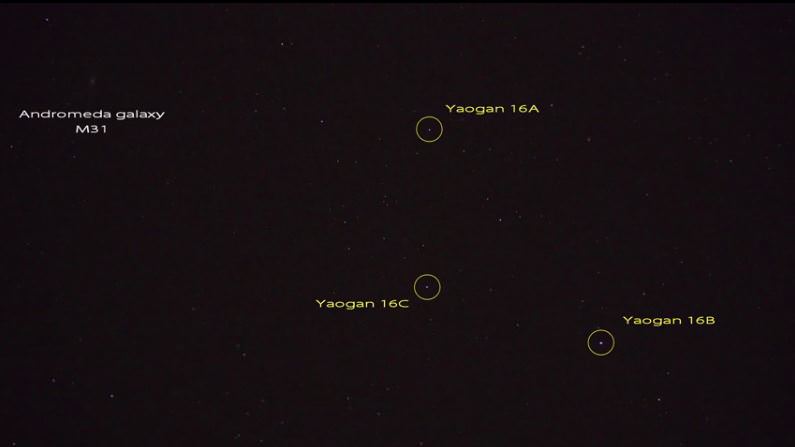The list of amazing things that astrophotographer Thierry Legault captures with his camera keeps growing! This time, it’s a trio of hard-to see, formation-flying Chinese reconnaissance satellites called Yaogan.
“Yaogan triplets are Chinese reconnaissance satellites flying at 1,100 km in groups of 3, separated by about 100km (5°),” Legault explained to Universe Today.
In this video are two different ‘triplets’ of these satellites taken with Legault’s Sony A7s. First you’ll see the Yoagan 16 A/B/C passing through the sky field that includes M31, the Pleiades, the Hyades, the Orion nebula. Second is Yaogan 20 A/B/C passing over M31 just before disappearing in the shadow of the Earth.
“The magnitude of Yaogans is about 5, barely visible to the naked eye,” Legault said via email. “But sometimes they flare, as you can see in the beginning of the movie.”
The fine tracking Legault did of these objects is incredible, along with the detail of the stars and deep-sky objects. ?
Legault used Calsky – his go-to source for observing – to calculate where he would need to be to see these satellites crossing near the famous deep-sky objects. He drove about 100 km west of his home in Paris to capture this unique video.
According to Robert Christy at zarya.info, the Yaogan satellites are imaging satellites “with a government or military purpose. Some seem to carry optical payloads and others carry radar. There are also some launches into orbits very like the US NOSS satellites.”
Christy lists the tasks of these satellites as imaging for remote sensing for military or government photo-reconnaissance including for “natural resources surveys and, possibly, intelligence gathering. Specific tasks include land survey, crop yield assessment, and input to disaster monitoring and prevention plans.”
There have been 24 launches of these satellites since 2006, with one launching as recently as November 20, 2014. Four of the launches were for “triplets” of these satellites.
Find out more about these satellites at zarya.info.
As always, you can see more of Legault’s find astrophotgraphy at his website.
See our review of his newly translated book “Astrophotography” here.

